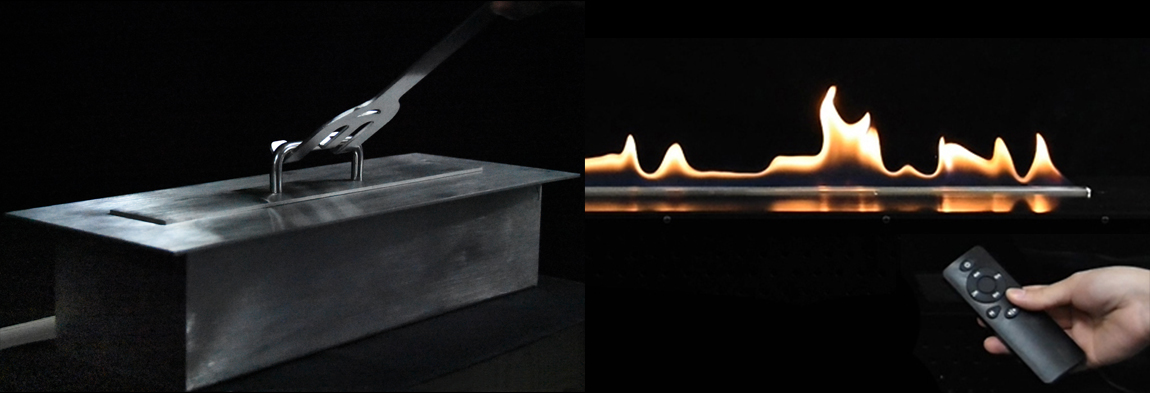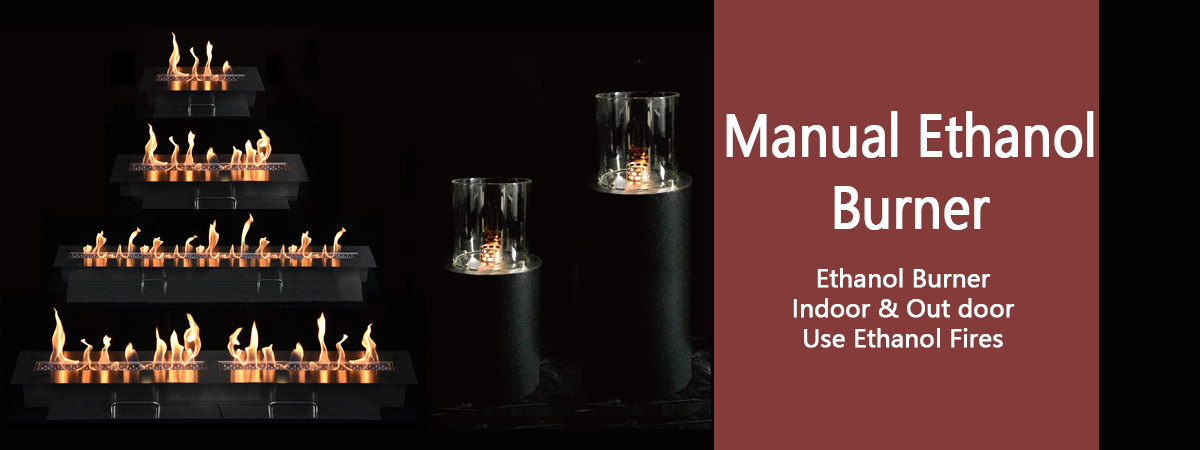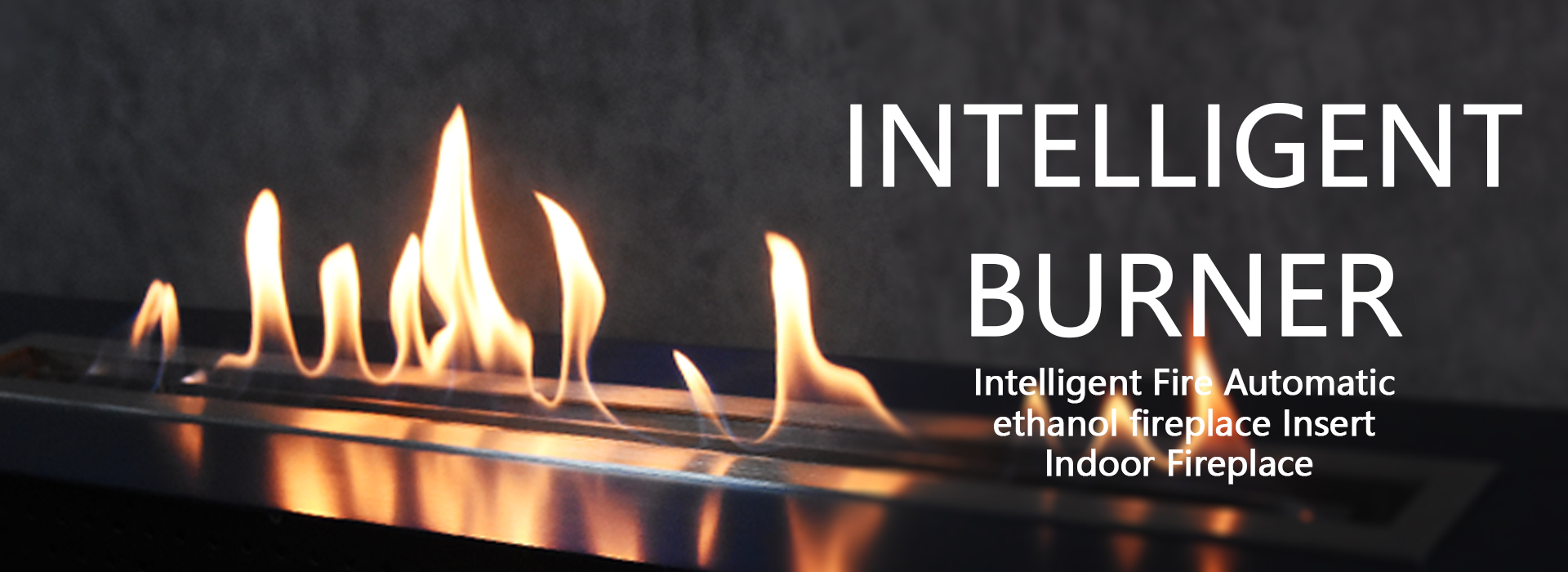Differences Between Manual Ethanol Fires And Automatic Ethanol Fires
Choosing the perfect bio ethanol fireplace from the wide array of models and burner types available can be quite daunting. However, understanding waht the differences are between a manual ethanol fireplace and an automatic ethanol fireplace can help you make an informed decision.
The key contrasts lie in their operation and control mechanisms. A manual bio ethanol fireplace requires manual intervention for fuel filling, ignition, flame control, and extinguishing, with the user personally monitoring the process. On the other hand, an automatic ethanol fireplace incorporates electronic controls, such as pumped fuel filling, automatic ignition, adjustable flame intensity and electronic extinguishing options, providing convenience and added safety features. Let's delve deeper into their distinctions to help you make the right choice for your needs.

Automatic ethanol burners are a step up from manual ethanol burners. Automatic ethanol burners can be operated with a remote control, control panel or even your smartphone and smart home system. These remote-controlled bio ethanol burners are also safer thanks to many safety sensors overseeing their work.
A manual ethanol fireplace insert is a stainless-steel container that is filled with bio ethanol fuel. To start the fireplace, you need to use a long lighter to ignite the fuel. The point is that you have to adjust the flames manually and extinguishing the fire is done the same way.
Bio ethanol fireplaces first appeared in 2005. A introdução dos fogos de bioetanol tornou possível colocar uma lareira em quase todos os lugares e sem qualquer ventilação, chaminé, fumaça, fuligem ou manutenção cara. Desde então, a tecnologia e a segurança evoluíram, e hoje temos dois tipos de incêndios com bioetanol: Manual and Automatic bio ethanol burners.
Esses dois tipos têm suas vantagens e desvantagens. Por isso, o tipo de queimador que você selecionar, depende de quais requisitos você tem para sua lareira, onde será usado, e qual é o seu orçamento.
Although there are only two types of bio ethanol burners, os produtos de diferentes fabricantes podem variar e oferecer diferenças na forma como seus queimadores funcionam. For this reason, the information you will find in this guide will only be indicative. If you want a more accurate description of each manufacturer's bio fireplace and burners, you should check out the specific product page and read the manual linked on the page.
You can find all of our automatic or manual bio ethanol burners here:
Bioethanol Fires with a Manual Bio ethanol Burner
A manual bio ethanol burner, is a steel container made of stainless steel, which you fill with bioethanol. The burner has an opening, that can be round or long, depending on the shape of the burner. The flame is ignited with a lighter and extinguished by smothering the fire. The manual burner is the most known, and therefore, it is seen in most bioethanol fires, especially in wall mounted and freestanding bioethanol fires.
To increase the safety of manual bioethanol burners, almost all manufacturers had to find a method for how to avoid spilling the bioethanol out of the burner if it should fall or tip over. The most common method is the use of ceramics fibre cotton in the burner. This is designed to absorb the bioethanol fuel, and makes it impossible to spill the bio ethanol fuel out of the burner if it would tip over by accident.
Benefits of a Manual Bioethanol Burner

1. Não é necessária energia ou cabos e pode ser montado em qualquer lugar
Manual bio ethanol burners and fireplaces can be installed and placed freely, porque eles não requerem nenhuma conexão de energia ou outro cabo, nem precisa de chaminé, ventilação ou chaminé. O único fator a considerar é o tamanho que você deseja que o queimador tenha.
However, vocês, é claro, ainda precisam estar cientes dos riscos gerais de incêndio e das distâncias de segurança. Você pode ler sobre distâncias de segurança em nosso guia sobre o assunto.
2. Manual bio ethanol burners are cheap
Bio ethanol fires have existed for some years, with the manufacturers continuously optimizing the production costs. Furthermore, os queimadores manuais não requerem nenhuma tecnologia digital, e isso significa que os preços das lareiras biológicas manuais são bastante baixos neste momento.
Disadvantages of a Manual Bio ethanol Fireplace
1. Operated manually
The most obvious disadvantage of the manual bioethanol fireplace is the manual control. It means that you have to get close to the flame for adjusting or switching the burner on and off. Therefore, a manual bioethanol fire should not be operated by children.
2. Fewer safeguards
Although the manual burners are perfectly safe when you follow the instructions and use common sense, the automatic bio ethanol fires have additional safety sensors that the manual ones do not. These sensors are not available when using a manual biofire.
Bioethanol Fireplace with an Automatic Bioethanol Burner
Automatic bioethanol burners require, just like the manual burners, bioethanol fuel to function. However, this is the only real similarity between them.
Bio ethanol fires with automatic burners are much more technical. Depending on the selected model and manufacturer, you can control them with a remote control, via a control panel, an app, a home-system or Wi-Fi.
For the automatic burners, the bioethanol is filled into an external fuel tank. From there, it is pumped up into the burner for incineration when it is turned on. With manual burners, you just pour the bioethanol fuel directly into the burner opening.
The automatic burner is often seen in built-in bio ethanol fires and used for new constructions, bigger renovation or interior design.
Benefits of an Automatic Ethanol Burner

1. Fácil de controlar a chama
É mais fácil apagar e acender um queimador automático. Tudo que você tem a fazer, é clicar no controle remoto, o painel de controle no gravador ou através de um aplicativo. Alguns incêndios automáticos de bioetanol também permitem o ajuste do tamanho da chama e o controle da quantidade de calor irradiado.
2. Sensores de segurança
Um bônus extra com um queimador automático, é o número de sensores de segurança, que não são possíveis de obter em um queimador manual. Isso pode incluir sensores que monitoram os níveis de CO2, tremendo, superaquecimento, etc.. Assim, a lareira será desligada automaticamente, caso os sensores detectem algum perigo.
3. Economia de combustível
Queimadores automáticos geralmente têm uma melhor economia de combustível de bioetanol, uma vez que o combustível só é bombeado para o queimador, quando é necessário. Isso significa que nenhum combustível bioetanol será desperdiçado quando a lareira estiver sendo ligada e desligada. Furthermore, também não evaporará por si só se o bioetanol não queimado for deixado na lareira.
Desvantagens de um queimador automático
1. Caro
Uma das maiores desvantagens de um queimador automático de bioetanol é o preço. Um queimador automático de bioetanol custa muito mais do que seu equivalente manual. A razão para isso é que a tecnologia utilizada nos modelos automáticos ainda é relativamente nova e mais avançada. Isso significa, requer mais desenvolvimento e horas de trabalho para produzir, e os materiais necessários para a fabricação são mais caros.
2. Requer energia
Para que todos os componentes eletrônicos do queimador funcionem, é necessário ter uma conexão de energia perto da instalação da lareira a etanol. Isso torna a instalação menos flexível.
However, alguns queimadores automáticos estão equipados com uma bateria e, portanto, precisam ser recarregados.
Art Fireplace Team Focus on Ethanol Fireplaces for more than 14 years and we are obliged to offer high quality products for all customers.

Art Fireplace Technology Limited.
PROFESSIONAL INTELLIGENT FIREPLACE LEADER
Official Website: https://www.art-fire.com
Telefone:0086 13928878187 E-mail:[email protected]
Endereço:FLAT/RM 705,7/F,FA YUEN COMM BLDG NO.75,FA YUEN STREET,MONG KOK,KLN,HK
Hora da postagem: 2024-04-24
